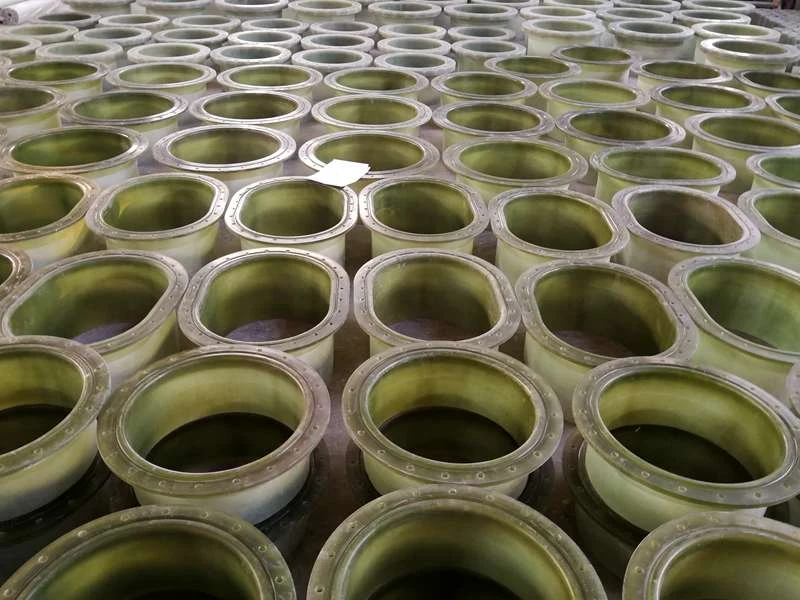grp clarifier
Understanding GRP Clarifiers A Comprehensive Overview
GRP clarifiers, short for Glass Reinforced Plastic clarifiers, represent a crucial technology in the field of wastewater treatment and water purification. These systems are designed to efficiently separate solid particles from liquids, making them essential in various industrial and municipal applications. The use of GRP materials in clarifier construction brings a host of benefits that enhance both performance and longevity.
Definition and Function
A clarifier is typically a large tank or vessel where solids settle out from liquids due to gravity. The process involves the gentle agitation of liquid to encourage the coalescence of particles, which settle on the bottom as sludge. The clarified liquid, also known as supernatant, is then drawn off from the top. GRP clarifiers use fiberglass as the primary construction material, which provides an excellent combination of strength, corrosion resistance, and lightweight properties.
Advantages of GRP Clarifiers
1. Corrosion Resistance One of the standout features of GRP materials is their excellent resistance to corrosion. This is particularly important in wastewater treatment, where the presence of aggressive chemicals can quickly degrade traditional materials like carbon steel or concrete. GRP clarifiers can withstand harsh environments without significant maintenance costs, thereby extending the service life of the equipment.
2. Lightweight Compared to conventional materials, GRP is much lighter, which simplifies the installation process. This characteristic allows for easier transportation, reducing the overall footprint of the equipment and making it ideal for sites with space constraints.
3. Durability GRP’s inherent properties provide high impact resistance and the ability to withstand various environmental conditions. This ensures that GRP clarifiers can operate reliably over extended periods without the risk of structural failures.
grp clarifier

4. Cost-Effectiveness Although the initial investment in GRP clarifiers may be higher than traditional options, the long-term savings on maintenance, repair, and replacement costs make them economically viable. Their durability reduces downtime, leading to efficient operation and lower overall operational costs.
5. Design Flexibility GRP can be fabricated into various shapes and sizes tailored to specific operational requirements. This flexibility allows for the design of bespoke clarifiers that fit perfectly into existing systems, ensuring maximum efficiency.
Applications of GRP Clarifiers
GRP clarifiers find extensive use across a range of industries. In municipal wastewater treatment facilities, they effectively separate sediment from sewage, facilitating cleaner effluent discharge into the environment. In industrial settings, GRP clarifiers serve in processes where the separation of solids from liquids is necessary, such as in food processing, chemical manufacturing, and mining operations.
Moreover, GRP clarifiers are employed in stormwater management systems, where they minimize pollutants before water is released into natural water bodies. Their efficiency in treating high-load conditions makes them particularly valuable in urban areas where runoff can introduce various contaminants.
Conclusion
In summary, GRP clarifiers are an important innovation in the quest for effective waste management and water treatment solutions. Their unique combination of durability, corrosion resistance, and lightweight properties makes them a preferred choice for many applications. As industries continue to prioritize sustainability and efficient resource management, the role of GRP clarifiers is set to become even more significant, paving the way for cleaner water and a healthier environment. Adopting this technology not only enhances operational efficiency but also aligns with global efforts toward ecological conservation and responsible resource utilization.
Latest news
-
Oblate Tanks: Space-Saving, Durable Liquid Storage SolutionsNewsAug.27,2025
-
High-Performance Piping System Solutions for Industry & Commercial UseNewsAug.26,2025
-
Precision Fittings: Durable & Reliable Industrial & Plumbing SolutionsNewsAug.25,2025
-
Practical Steps: Unlock Success with Our Proven GuidesNewsAug.24,2025
-
Transport Tanks: Safe, Durable & Efficient Liquid HaulingNewsAug.23,2025
-
High-Quality Piping Systems for Efficient Flow & DurabilityNewsAug.22,2025











